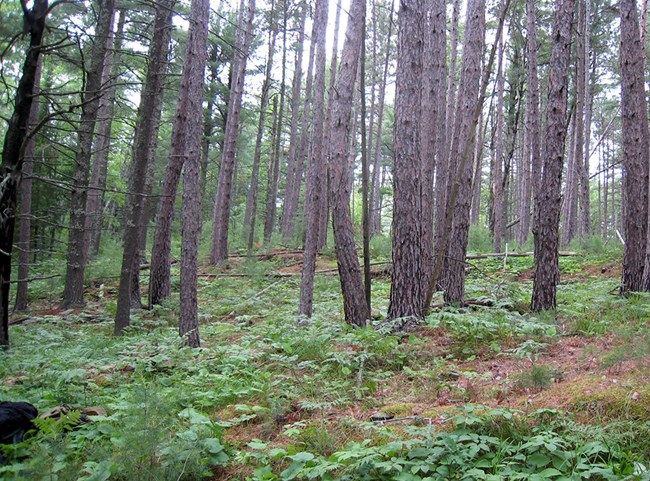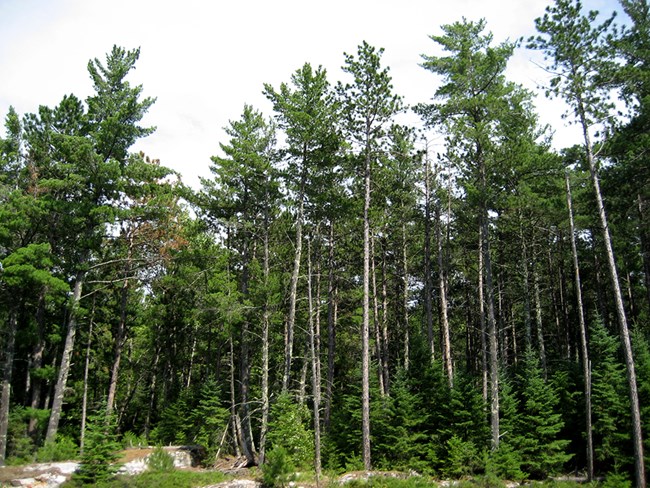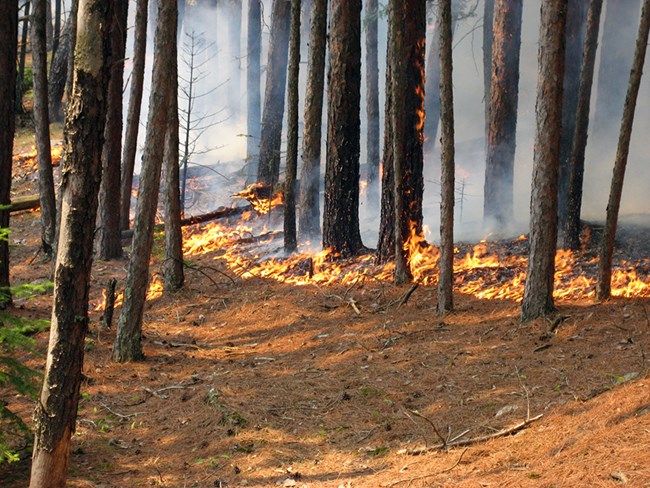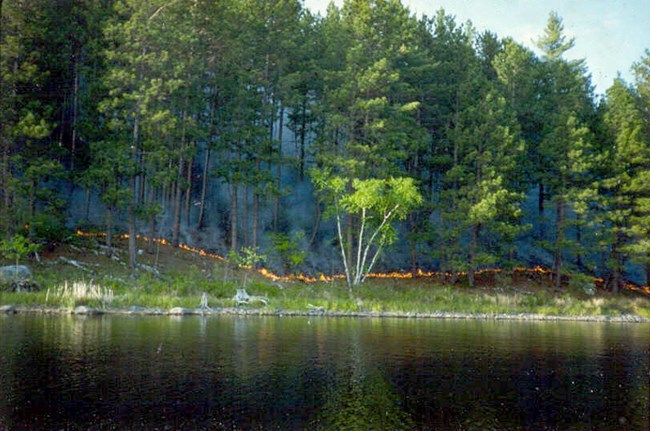Last updated: January 22, 2021
Article
Wildland Fire in Red Pine and White Pine

NPS / S WEYENBERG
Distribution and General Characteristics
The red pine and white pine forest inhabits the cooler climates of the upper Midwest. They once covered large areas of northern Minnesota, Wisconsin and Michigan. Most of the trees are red and white pine, however, it depends on soil conditions, location and fire occurrence to determine other plants that live there. Campers love older stands of red and white pine because of the high canopy and generally pleasant conditions.

NPS / S WEYENBERG
Historic Role of Fire
Red and white pine forests owe their presence and persistence in large part to fire. Although both types of trees can live in areas without fire, especially on very sandy soils, frequent fires are necessary for healthy forests. Historically, fire burned red and white pine forests as often as every 5 to 10 years, but more commonly every 20 to 40 years. Both red and white pine have thick bark that insulates them from light to moderate intensity fires. Other species such as birch, maple and fir cannot tolerate fire very well. Therefore, fires burning at relatively frequent intervals benefit pines.
Fires typically occurred in the late spring into the early fall, due to lightning and human ignitions. Recent research lends support to the idea that the majority of fires were due to American Indian burning. Fires were purposely set to help blueberries produce, reduce brush, improve hunting, and for many other reasons. Keeping fire out of an area can lead to too many spruce and fir. In some cases, this can cause disastrous fires, thus killing the pine forest, and hardwoods such as maple, taking their place. Eventually, the stand converts to maple forest because fires do not occur as frequently.

NPS / S WEYENBERG
Current State and Management Actions
Due to large scale logging in the late 1800s and early 1900s, old growth red and white pines now cover less than 2% of where they once grew. Land managers now use prescribed fire to help the remaining stands in federal ownership. They use wetter conditions to slowly burn off the dead branches and needles on the ground that have built up, without killing the large trees. Once the fuels are down to a manageable level, a more natural fire schedule can resume.

https://www.fs.fed.us/database/feis/pdfs/Little/pinres.pdf and https://www.fs.fed.us/database/feis/pdfs/Little/pinstr.pdf

NPS / K FOGELBERG
Heinselman, M.L. 1996. The Boundary Waters Wilderness Ecosystem. University of Minnesota Press, Minneapolis, MN.
Kipfmueller, K. F., E. A. Schneider, S. A. Weyenberg, L. B. Johnson. 2017. Historical drivers of a frequent fire regime in the red pine forests of Voyageurs National Park, MN, USA. Forest Ecology & Management. 405, 31 – 43.
Weyenberg, S. A., and N. B. Pavlovic. 2014. Vegetation dynamics after spring and summer fires in red and white pine stands at Voyageurs National Park. Natural Areas Journal. 33(4), 443 -458.
